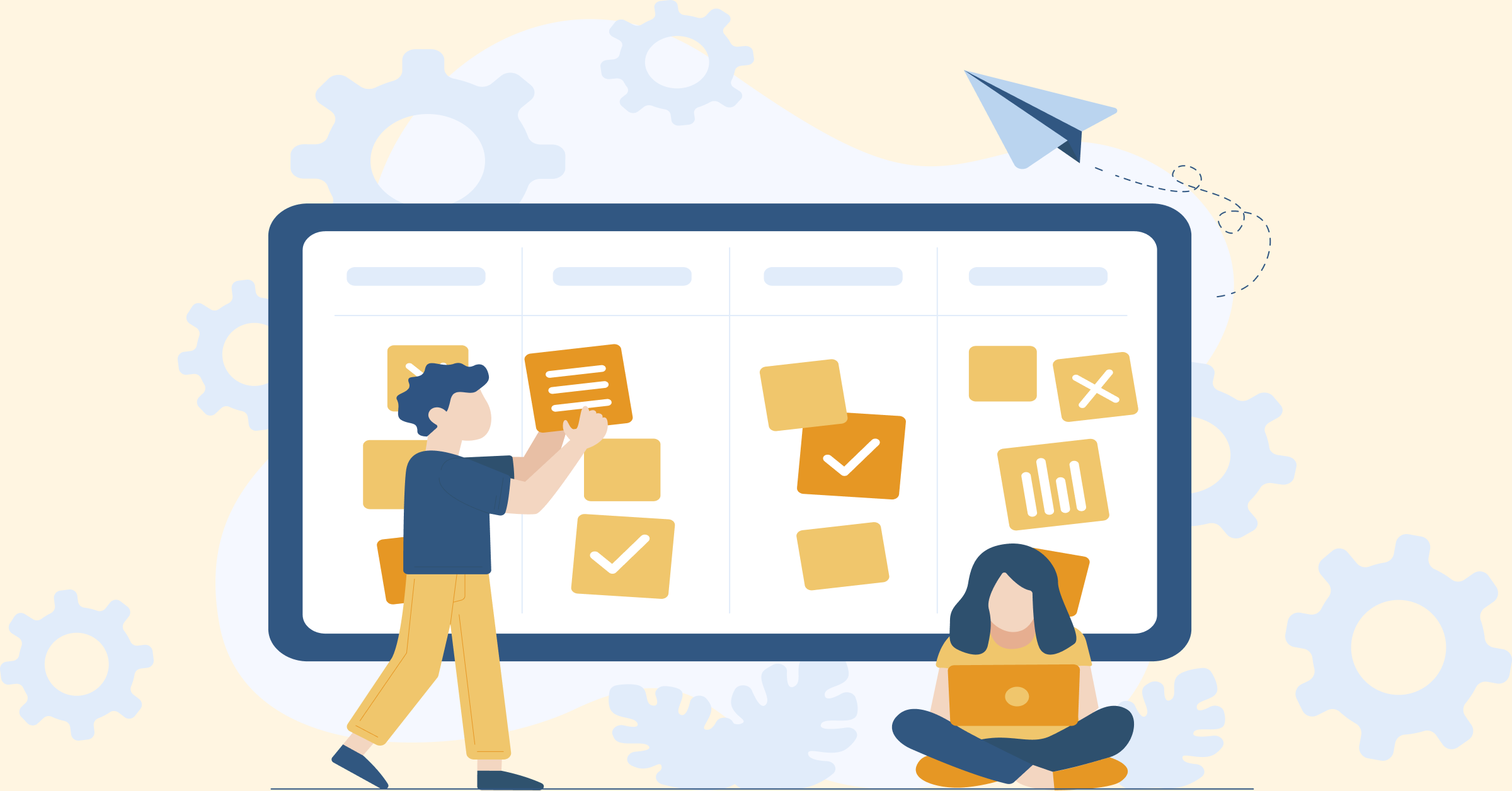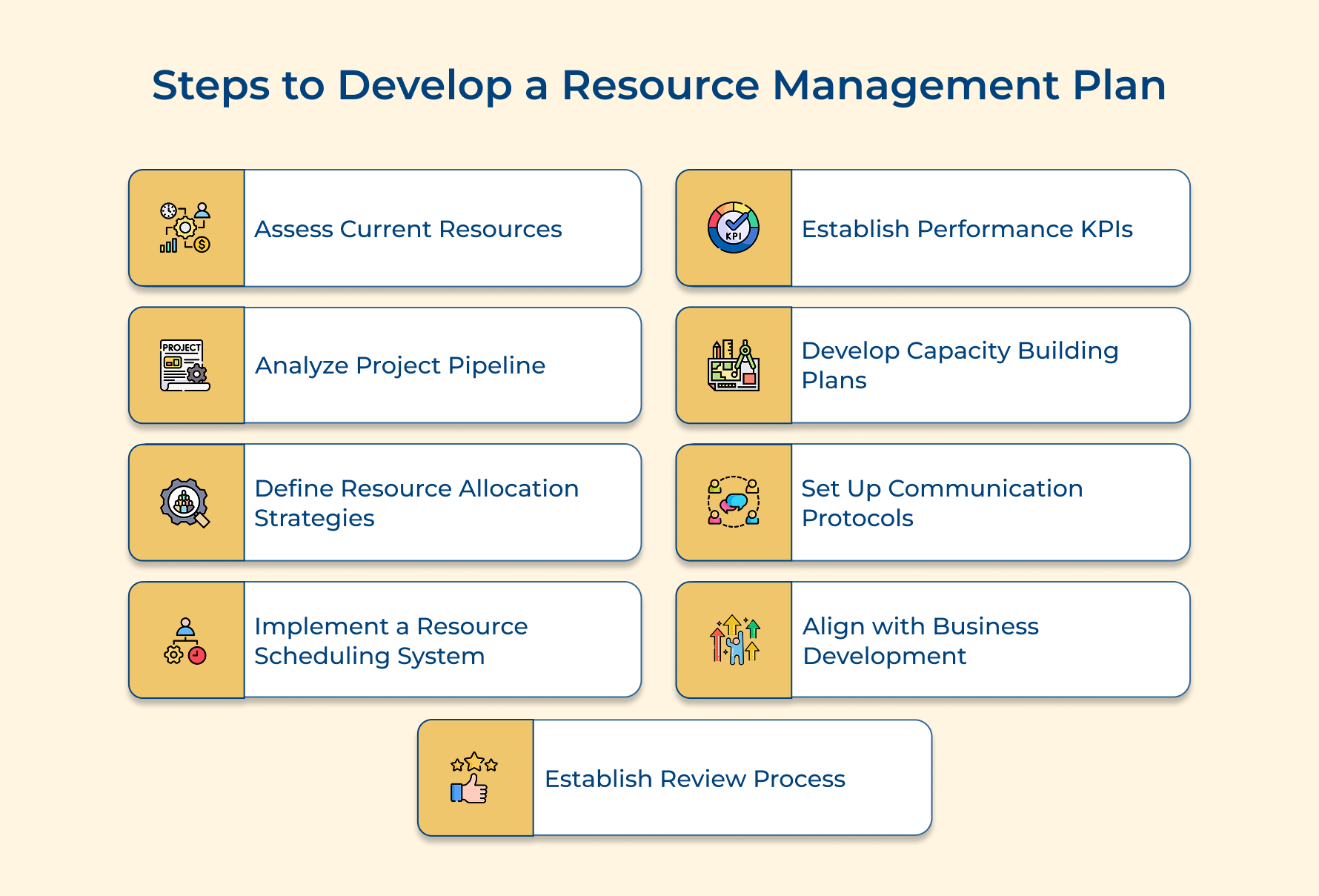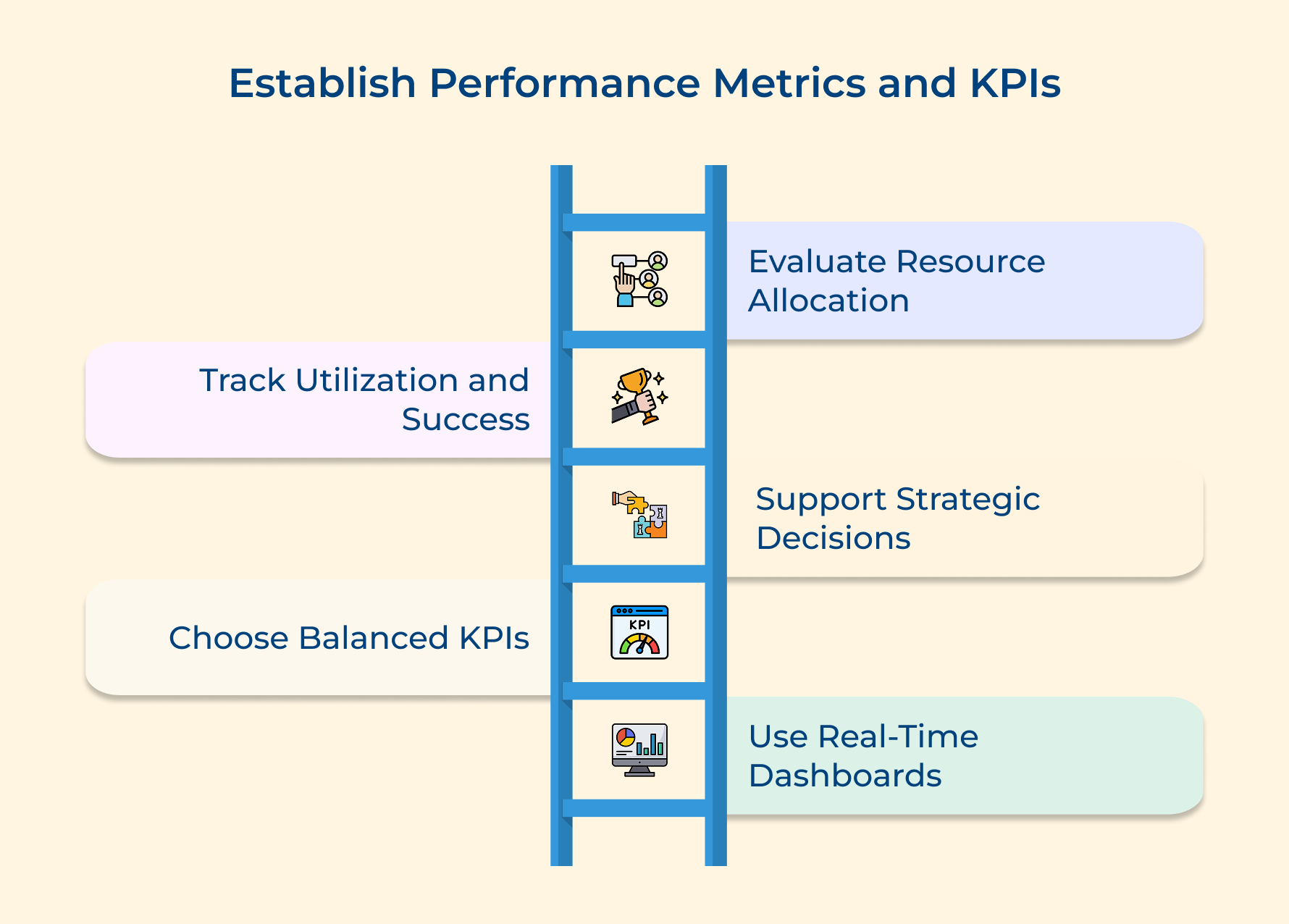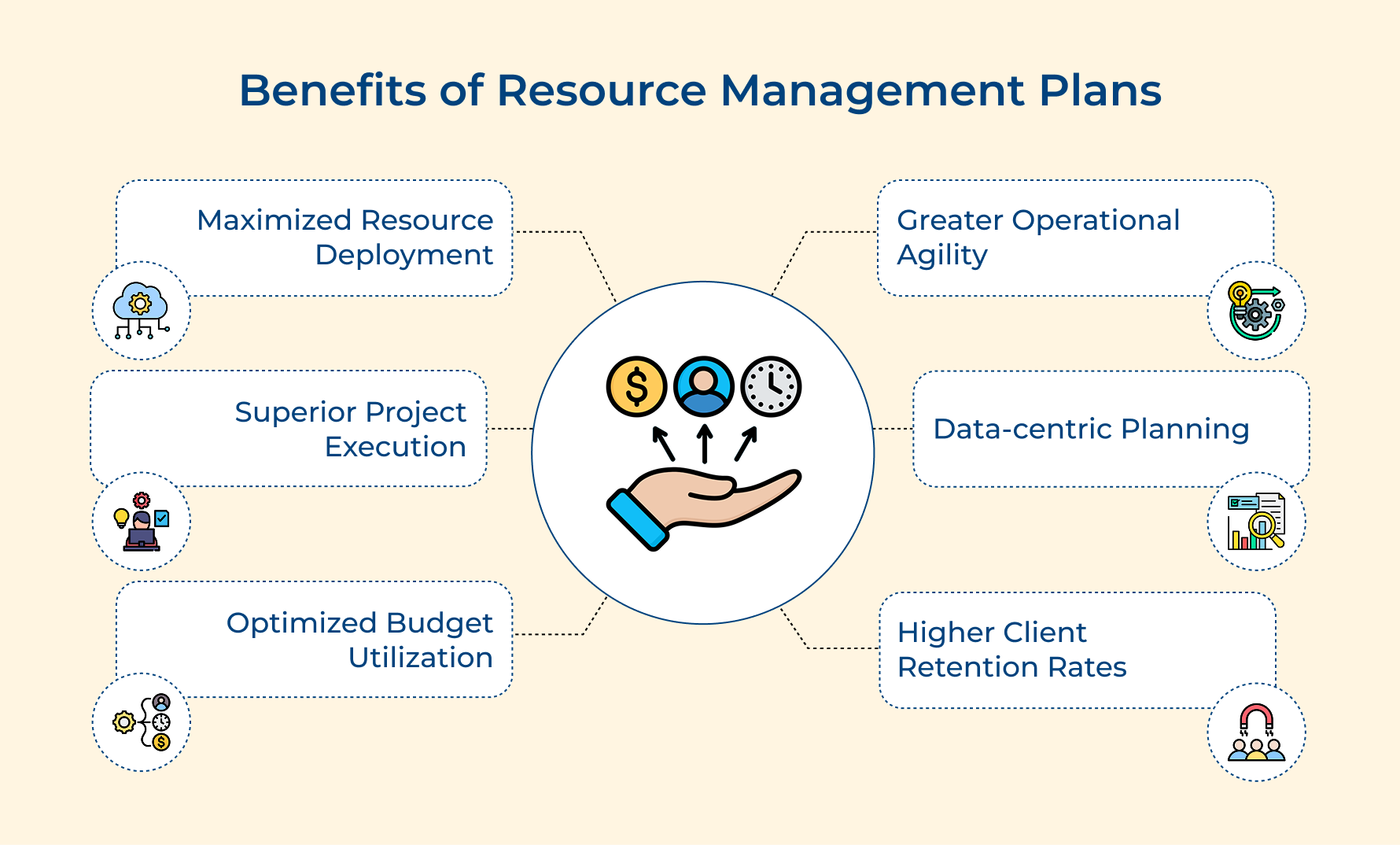Resource Management Plan: Ultimate Guide to Efficiency
- What is a Resource Management Plan?
- Key Components of a Resource Management Plan
- How to Develop a Resource Management Plan: 9 Steps
- Benefits of Resource Management Plans
- Best Practices for Resource Management Plan
- The Impact of Resource Management on Business Growth
- FAQs about The Resource Management Plan

Key Highlights
One of the top three challenges every organization faces is resource management.
A well-defined resource management plan addresses these pain points and provides a clear roadmap for identifying, allocating, and managing resources.
Teams can work more efficiently, reduce the risk of burnout, and enhance overall productivity.
Let us explore the key components of an effective resource management plan for professional services as well as agencies.
You’ll discover how to create a comprehensive strategy that aligns your resources with business goals and improves project outcomes.
Let’s delve into the world of resource management and unlock your team’s full potential!
What is a Resource Management Plan?
A resource management plan is a strategic framework that outlines how an organization will allocate, manage, and optimize its resources—such as personnel, equipment, as well as budget—throughout a project or operation.
Serving as a roadmap, the plan ensures resources are used efficiently and effectively while aligning with organizational goals.
The significance of a resource management plan lies in its ability to anticipate resource needs, prevent bottlenecks, and improve overall productivity.
Key objectives:
- Resource allocation: Ensuring the right resources are assigned to the right tasks to maximize efficiency.
- Utilization tracking: Monitoring how resources are used over time to identify areas for improvement and optimization.
- Capacity planning: Anticipating future resource needs based on project timelines and demands to prevent shortages.
- Risk management: Identifying potential resource-related risks and developing strategies to mitigate them, ensuring project continuity and success.
Key Components of a Resource Management Plan
Understanding the essential elements of a resource management plan is crucial for effective resource allocation and project success. Here are the key components.
Resource identification: Start by cataloging all available resources, including team skills, expertise, and current availability. It’s essential that you keep an updated inventory of your team’s human capital, tools, and technologies. This way, you can match resources to project requirements and client needs effectively.
Resource allocation and scheduling: Once you know what resources you have, it’s time to strategically assign them. Match team members to projects based on their skills, availability, and the demands of each project. The approach helps you create balanced schedules, making the most of your resources without overloading anyone, ensuring on-time delivery and avoiding burnout.
Client engagement and communication: Good client communication is key. Establish clear channels to set expectations and build trust. Regular updates on resource allocation, project progress, and any changes help keep everyone aligned.
Real-time utilization tracking: Implement systems to monitor resource utilization in real time. It gives you insight into current workloads, capacity, and potential bottlenecks, allowing you to make quick adjustments to keep productivity optimal.
Resource forecasting: By analyzing historical data and looking at upcoming projects, you can forecast future resource needs. A proactive approach lets you plan for hiring, training, or outsourcing so your organization is ready to meet demands.
Financial management: Integrating resource management with financial planning is essential. By tracking billable hours, project costs, and profit margins, you ensure resources are allocated efficiently. The alignment maximizes profitability while delivering high-quality work that keeps clients happy.
Performance evaluation and feedback: Regularly assess both individual and team performance to provide constructive feedback as well as identify areas for growth. Using performance data to inform resource allocation decisions and professional development initiatives helps enhance overall efficiency across your organization.
How to Develop a Resource Management Plan: 9 Steps
Creating a resource management plan involves a systematic approach to ensure optimal resource utilization and project alignment. Here are the steps.
1. Assess Current Resources and Capabilities
Assessing your team’s skills and resources helps you see strengths, as well as spot skill gaps while avoiding potential bottlenecks. The approach builds a practical resource plan that’s grounded in actual needs.
For instance, let’s say you’re considering a complex new project. By reviewing your team’s capabilities, you might find an underutilized team member with the right skills, avoiding the need for a new hire and providing them with a growth opportunity.
The assessment also helps in capacity planning, letting you decide if you can take on additional work or need to outsource. Regular skill reviews and a centralized skills database make this process even smoother.
2. Analyze Project Pipeline and Forecasting
Analyzing your project pipeline and forecasting demand helps you stay ahead of resource needs. It lets you prepare for upcoming projects, spot any potential shortages or overages, and make proactive decisions.
Having this foresight is essential for keeping things running smoothly and ensuring clients stay happy in a fast-paced environment.
Use these insights to shape hiring plans, schedule training, and allocate resources wisely. It can also guide decisions on taking on new projects or negotiating timelines with current clients.
How to make it more effective?
- Implement a project management system for real-time tracking and accurate forecasting.
- Stay connected with sales and business development to align resources with future
3. Define Resource Allocation Strategies
Clear resource allocation strategies help your organization use talents and assets efficiently.
They keep resources from being overworked or underutilized, prevent project conflicts, and boost productivity. Plus, these strategies provide consistency in decision-making across teams.
How can you make this work day-to-day?
- Use these strategies to guide staffing choices, set task priorities, and resolve any conflicts over resources.
- Apart from that develop a clear system for deciding which projects & tasks come first. A flexible allocation model is also great for adjusting resources as project needs change.
4. Implement a Resource Scheduling System
Imagine your team is managing multiple projects with tight deadlines. With a scheduling system, you can easily see who’s free and who’s fully booked.
If an urgent task comes up, you’ll know right away which team member can take it on without being overloaded.
The system also helps you plan around time off, avoiding last-minute surprises. It’s a key tool for keeping projects on track and balancing workloads.
While using a cloud-based system does help in smoothening your workflows, what helps more is asking your team members to update their availability at regular intervals.
5. Establish Performance Metrics and KPIs
Performance metrics and KPIs give you clear, objective measures of how well resource management is working.
These metrics are essential for continuous improvement, ensuring accountability, and showing stakeholders the impact of effective resource management.
Here’s how you can use these metrics,
- Evaluate Resource Allocation: Use KPIs to assess how efficiently resources are being allocated, making sure everyone’s time and skills are used wisely.
- Track Utilization and Success: Monitor utilization rates and project outcomes to see if resources are being used at their best capacity.
- Support Strategic Decisions: Metrics can guide process improvements, and performance reviews, as well as help in making strategic choices.
Choose a balanced set of KPIs that include efficiency as well as effectiveness metrics. A real-time dashboard helps you to look into trends easily so as to make any quick adjustments.
6. Develop Skills and Capacity Building Plans
Skills and capacity-building plans help your team grow alongside market trends as well as tech advancements. They fill skill gaps, boost employee satisfaction, and strengthen your organization’s competitive edge.
But, how to leverage it for overall productivity?
- Invest in training and create career development paths that align with both team as well as organizational goals.
- Shape project assignments to match employees’ growth goals and guide hiring to fill critical skill needs.
- Support succession planning and create a team that can adapt to changing demands.
You will develop a foolproof resource development plan as long as you conduct regular skill gap analysis and implement a mentorship program that fills the difference.
7. Set up Communication Protocols
Clear communication protocols are vital for keeping everyone informed about resource allocation decisions, changes, and challenges.
They help avoid misunderstandings and build transparency, which is key for maintaining team morale as well as managing client expectations.
Let’s say a sudden project demand arises that requires additional resources.
An established communication protocol can quickly inform all relevant stakeholders about the changes in resource allocation and any challenges that may arise.
The proactive approach ensures everyone is on the same page, helping to mitigate any potential issues before they escalate.
8. Align with Business Development and sales
It’s all about striking a balance between chasing new opportunities and delivering quality work on existing projects.
Aligning resource management with business development and sales is key to ensuring your strategies support overall business goals.
Use this alignment to inform your sales strategies, guide proposal development, and set realistic project timelines.
Regular meetings between resource management, business development, and sales teams can help discuss upcoming opportunities as well as resource implications.
Plus, having a system in place to quickly assess resource availability makes evaluating new opportunities a breeze!
9. Establish a Review and Optimization Process
A review and optimization process is key to keeping your resource management plan effective. The approach helps you spot areas for improvement, adapt to changing business needs, and integrate valuable lessons learned.
How to make it more effective, you ask?
- Regular assessments: Use the review process to evaluate how well your current resource management strategies are working.
- Guiding updates: As you identify inefficiencies, update your processes or tools accordingly. It can also support the refinement of your KPIs, ensuring they reflect current business goals.
Here are some tips to help,
- Schedule quarterly reviews: Involve key stakeholders from various departments to gather diverse perspectives and insights during these reviews.
- Collect and analyze feedback: Set up a system for gathering feedback from team members and clients, as it provides valuable insights for your optimization process.
Benefits of Resource Management Plans
Resource management plans offer significant advantages, including improved efficiency, better project outcomes, and enhanced team collaboration. Explore the benefits here.
Maximized Resource Deployment
Resource management plans enable businesses to allocate staff and equipment efficiently across projects. Optimal utilization of capabilities reduces idle time and maximizes productivity. The result is improved overall performance and increased profitability for the organization.
Superior Project Execution
Comprehensive resource management plans increase the likelihood of completing projects on time and within budget. They help identify and allocate the right expertise to difficult tasks. Maintaining a balanced workload across teams results in higher-quality deliverables for clients.
Optimized Budget Utilization
Effective resource management allows for better cost control and budget allocation. Accurate forecasting of resource needs helps avoid over- or under-allocation. Organizations can minimize unnecessary expenses and reduce project overruns while improving overall financial performance.
Greater Operational Agility
A well-structured resource management plan enhances a company’s ability to adapt quickly to changes. It provides visibility into resource availability for swift reallocation. Companies can respond effectively to shifting priorities and new opportunities in the dynamic environment.
Data-centric Planning
Resource management plans rely on data-driven insights for decision-making. Tracking resource utilization and productivity informs choices as well as helps identify trends. Organizations can continuously improve their resource allocation strategies for future projects based on concrete data.
Higher Client Retention Rates
Efficient resource management leads to improved service delivery and consistent quality. Better adherence to project timelines increases client satisfaction and builds trust. The enhanced performance contributes to higher client retention rates and a stronger market reputation over time.
Best Practices for Resource Management Plan
Implementing best practices in resource management ensures streamlined operations and maximized productivity. Discover how resource managers can leverage best practices here.
Centralize your resource planning: Implementing a centralized system for resource allocation and tracking is a game changer. With a unified approach, you create a single source of truth that enhances visibility across projects and departments. It doesn’t just help in making better decisions but also reduces conflicts over resources.
Balance billable and non-billable time: It’s also important to strike a balance between billable and non-billable time. Aim for a healthy mix of billable client work alongside non-billable activities, like professional development. Balance is key to ensuring profitability while also supporting employee growth
Leverage technology and automation: Utilize resource management software to streamline planning and tracking processes. Automation reduces manual errors and saves time. You also get real-time insights for more agile resource allocation and help with project management plans.
Standardize project scoping: Develop a consistent approach to estimating project requirements and resource needs. Standardization improves accuracy in planning as well as reduces scope creep. It helps maintain profitability across different types of projects and clients.
Forecast resource needs regularly: Conduct frequent resource forecasting to anticipate future demands and potential shortfalls. Proactive planning allows for timely hiring and training.
Conduct capacity planning: Regularly assess your team’s capacity against current and projected workloads. Careful evaluation helps prevent overallocation and reduces burnout. There’s an assurance of having the right resources available for incoming projects.
Avoid or limit multi-tasking: Minimize assigning resources to multiple projects simultaneously. Focus on single-tasking improves productivity and quality of work. It enhances employee satisfaction while reducing errors and timeline delays.
The Impact of Resource Management on Business Growth
A well-crafted resource management plan is essential for agencies and consultancies aiming to optimize operations. Effective assessment of resources and strategic allocation enhances project outcomes as well as improves client satisfaction.
Incorporating key elements such as budget management and project tracking ensures teams remain agile as well as responsive to changing demands. A robust resource management plan drives efficiency while building a culture of continuous improvement, ultimately positioning businesses for sustained growth and success.
Limit time — not creativity
Everything you need for customer support, marketing & sales.
Neeti Singh is a passionate content writer at Kooper, where he transforms complex concepts into clear, engaging and actionable content. With a keen eye for detail and a love for technology, Tushar Joshi crafts blog posts, guides and articles that help readers navigate the fast-evolving world of software solutions.



